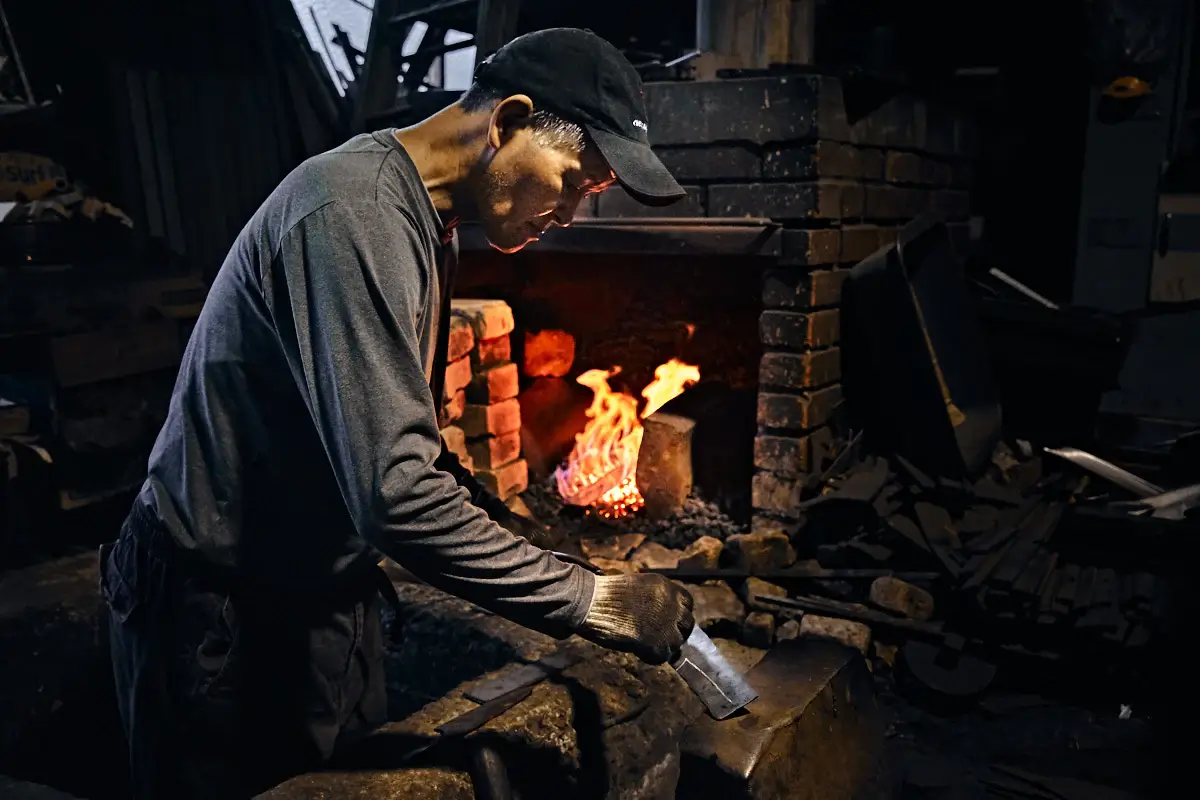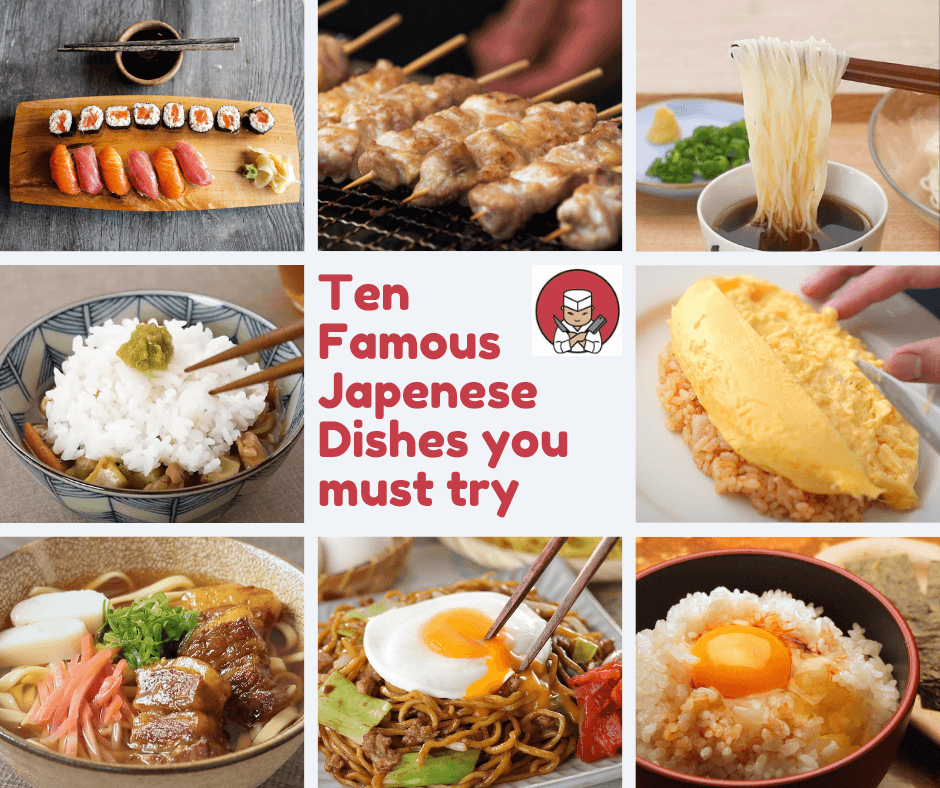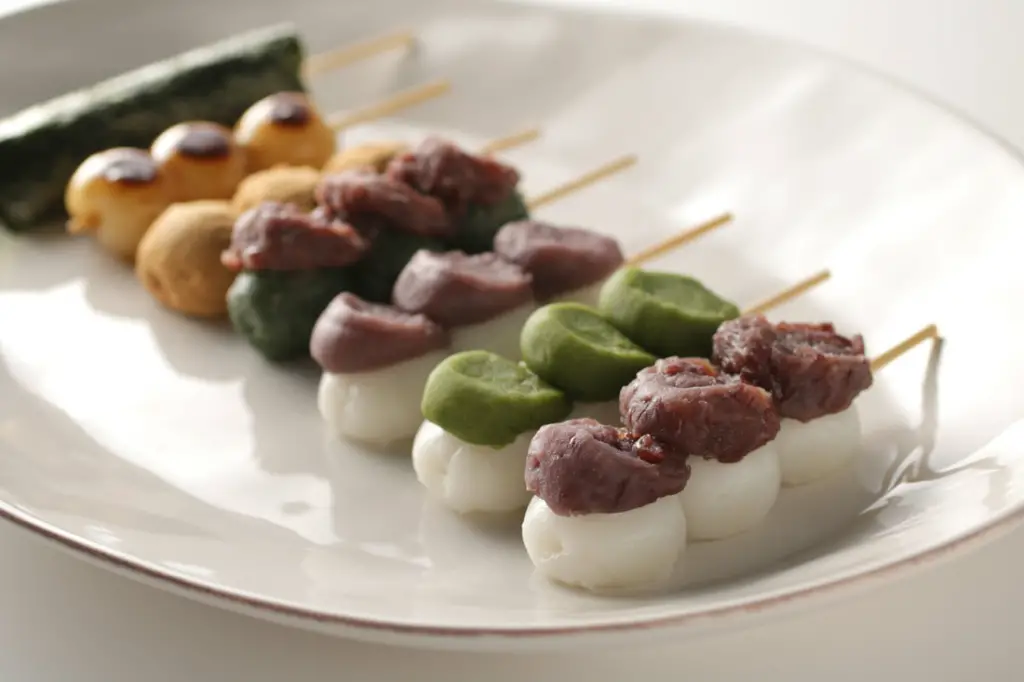
In this week’s random Japanese food article, I take a look at different dango types in Japan.
Did you know that there are over 20 different types and flavours of dango??
Here’s just a few:
- Shiratama dango — i.e. White Jade dango
- Otsukumi dango — i.e. Moon viewing dango
- Habutae dango — i.e. Silk dango
- Sasa dango — i.e. Bamboo Grass dango
- and much more..
Read on for a lot more!
First though, if you don’t know what dango is, here’s a quick description:
What is dango?
Dango is a popular, traditional sweet Japanese snack that is typically made of rice flour and various other ingredients. It is usually formed into a small ball, and often skewered on a stick of three to five pieces. It is similar to mochi, but there are some technical differences.
Read on for 22 different types of dango you can find in Japan:
22 Types of Dango
This list is in approximate order of popularity throughout Japan (based on Google search trends).
1. Mitarashi Dango (みたらし団子) / 醤油団子
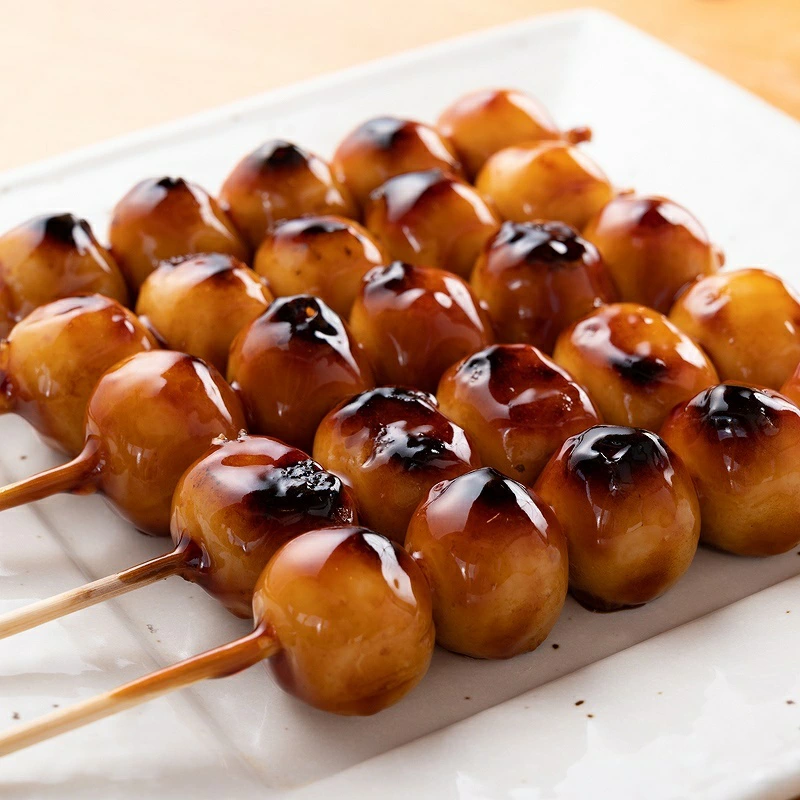
Mitarashi dango is the most popular and common type of dango in Japan. It consist of a skewer of three to five dumplings that are grilled, and coated with a sweet soy sauce glaze. Sometimes it is just called shoyu-dango (醤油団子) — i.e. soy sauce dango.
You can buy mitarashi dango everywhere in Japan, including supermarkets and convenience stores.
2. Sasa dango (笹団子)
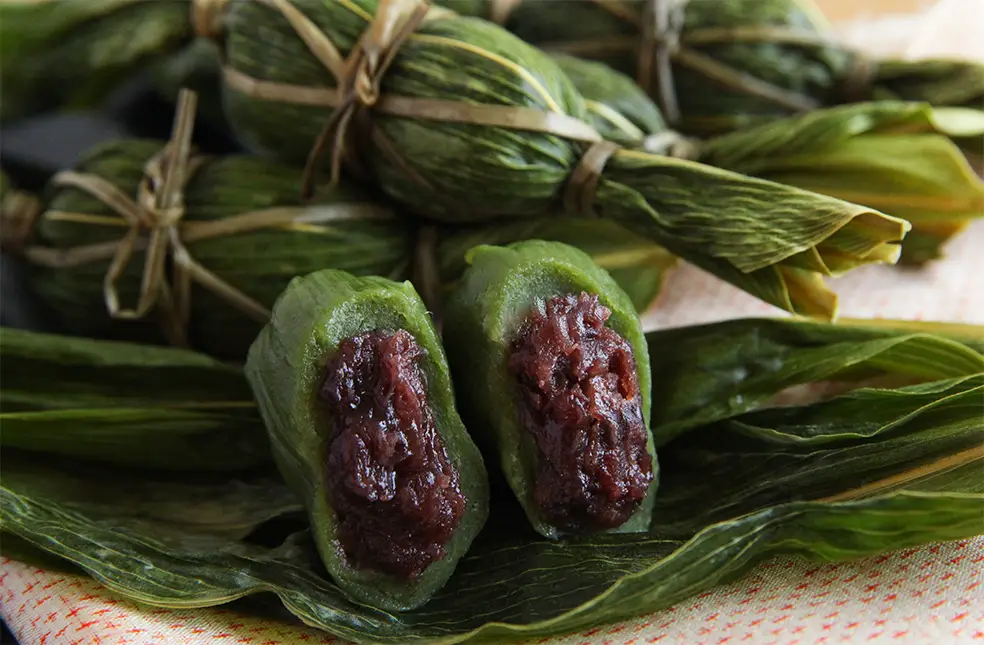
Sasa dango is a popular style of dango from Niigata prefecture. The dango is made with mugwort to give it an intense green color, and stuffed with red bean paste. It is then wrapped in a bamboo leaf/grass, and steamed or boiled.
“Sasa” (笹) is a type of bamboo grass in Japan.
3. Ikinari dango (いきなり団子)
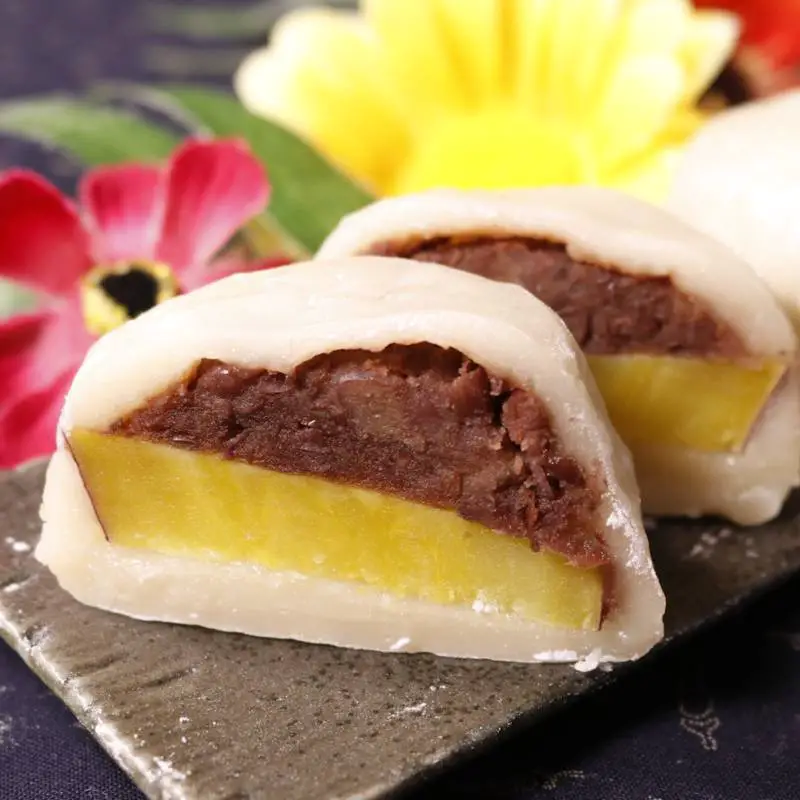
Ikinari dango is from Kumamoto prefecture. Unlike most other types of dango, it is not ball-shaped or skewered on a stick. The dango is stuffed with sweet potato slice and red bean paste, then steamed. It more resembles mochi than typical dango.
“Ikinari” (いきなり) means “suddenly”, and refers to the ability to make this treat in a short period of time.
4. Shiratama Dango (白玉団子)
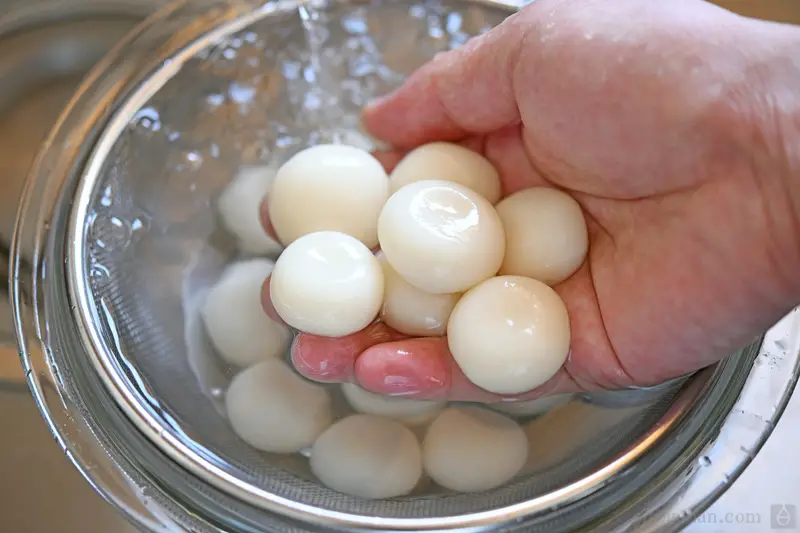
Shiratama dango refers to dango made with shiratamako — a special type of sweet, glutinous, rice flour that is used in Japanese sweets. It is considered a higher-end rice flour compared to other types like mochiko (i.e. mochi flour). It is also super fine, so the resulting dango has a very smooth, and glossy texture.
Shiratama (白玉) literally translates to “white jade”.
5. San-iro dango (三色団子)/花見団子 – Three color dango
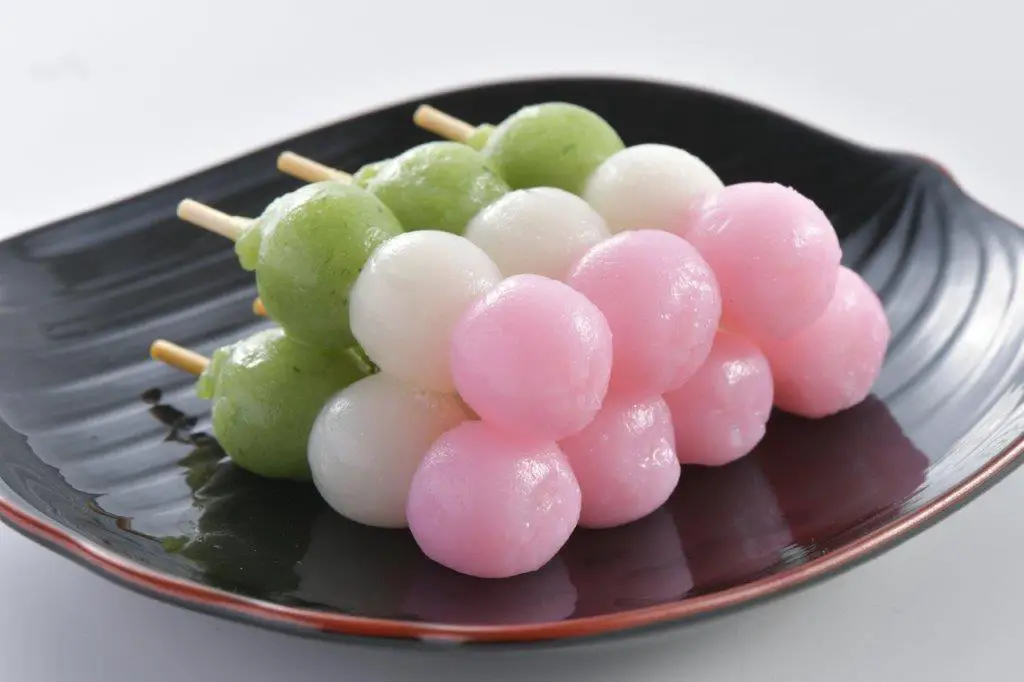
San-iro dango is a skewer of three different colored dumplings. Traditionally, the colors are always green, white, and pink. It is also called hanami-dango (花見団子), since it is traditonally eaten during cherry blossom season (i.e. hanami). The colors are meant to represent a cherry blossom tree. No sauce or stuffing is used.
6. Goma Dango (ごま団子) – Sesame dango
Goma dango refers to any dango made with sesame seeds (i.e. “goma” means sesame in Japanese). There are a couple main different types:
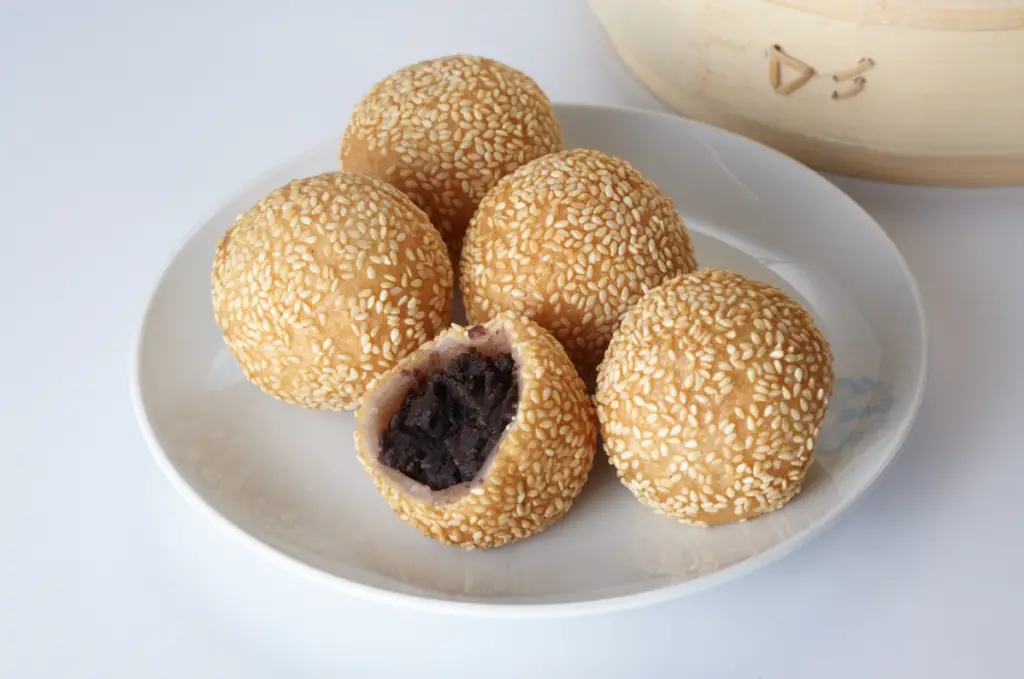
One type is actually adapted from a popular Chinese dish (芝麻球). The dough is made with rice flour, sugar and water. It is stuffed with a sweet bean paste that is mixed with sesame oil. The outside is then covered with sesame seeds, and deep fried.
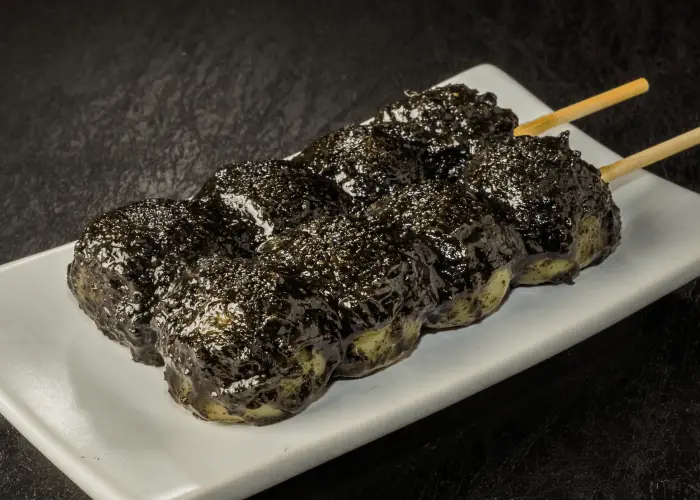
Another type of goma dango is simply dango that is covered in a sweet black sesame sauce.
7. Otsukimi dango (お月見団子) – Moon viewing dango / Moon festival dango
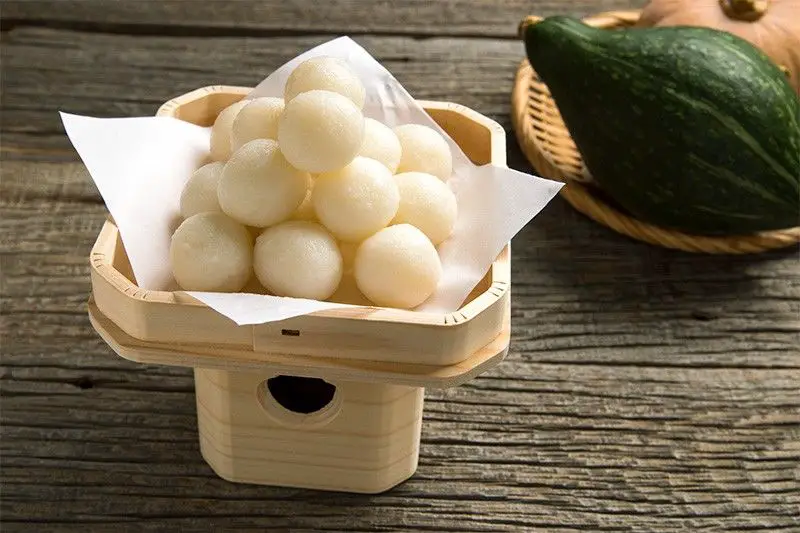
Tsukimi dango refers to dango that is offered to the moon. Specifically, on particular nights of a full moon — the 15th night of the 8th month, and the 13th night of the 9th month of the lunar calendar.
The dango are traditionally made in groups of 15, and stacked in a pyramid to bring the dumplings as close to the moon as possible. Less water is typically used, so that the dango is firmer, and easier to stack.
In olden times, it was thought that eating tsukimi dango on the night of a full moon would help you receive the power of the moon, bringing good health and happiness.
8. Anko Dango (あんこ団子)
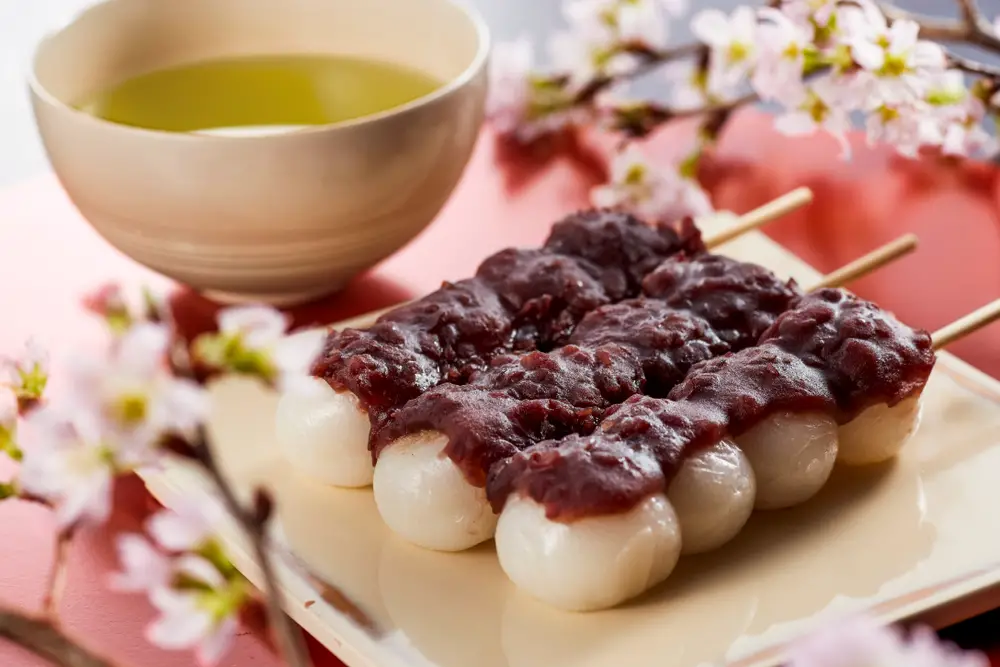
Anko dango is topped with a sweet red-bean paste (i.e. anko 餡子). Typically, it is skewered, though not always.
9. Kusa dango (草団子) / Yomogi Dango (よもぎ団子)
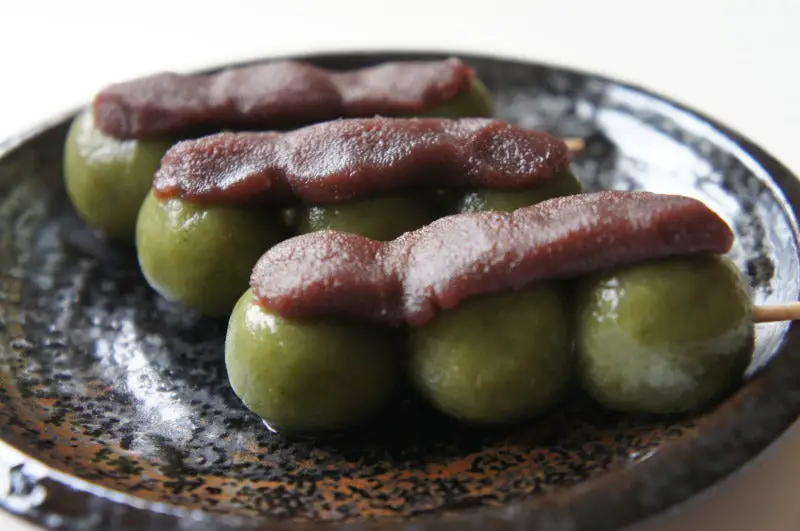
Kusa dango or Yomogi dango is kneaded together with mugwort (i.e. yomogi) to give it a distinct green color. The dango is then stuffed with red bean paste. It is also often topped or paired with kinako (soybean flour).
“Kusa” (草) means grass in Japanese.
10. Botchan dango (坊ちゃん団子)
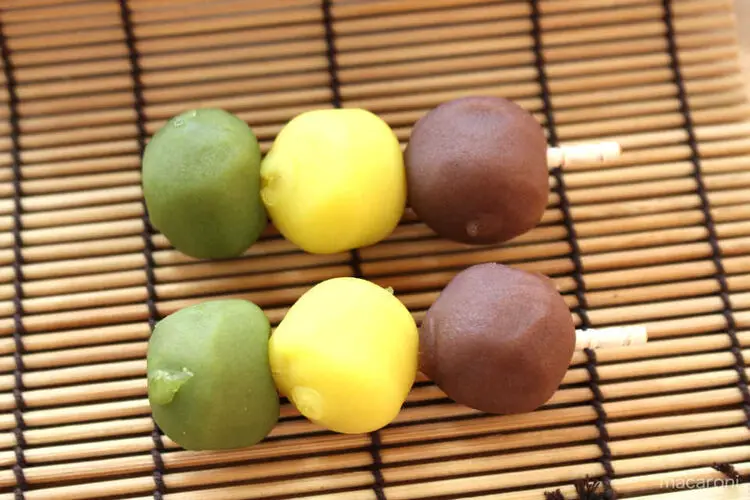
Botchan dango is another type of tri-color dango from Matsuyama City (Ehime prefecture). It is typically served on a skewer with green (matcha), yellow (egg), and red (azuki /red bean).
“Botchan” is the name of a famous novel. In the novel, dango was eaten at Dogo Onsen (in Matsuyama), which eventually led to the real-life dango from the area being called Botchan dango.
11. Kinako Dango (きなこ団子)
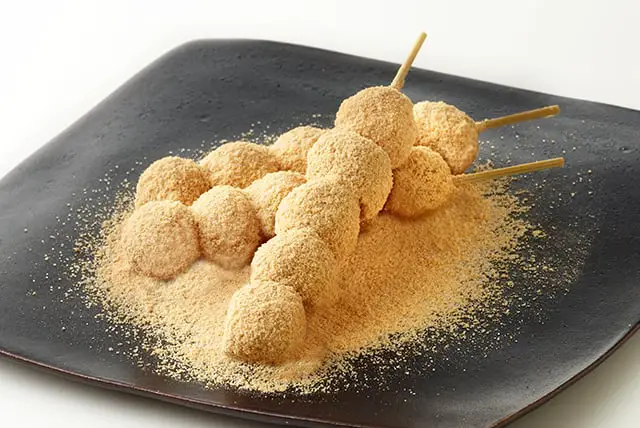
Kinako Dango is dango that is coated in a mixture of soybean flour (i.e. kinako), and sugar.
12. Soba Dango そば団子
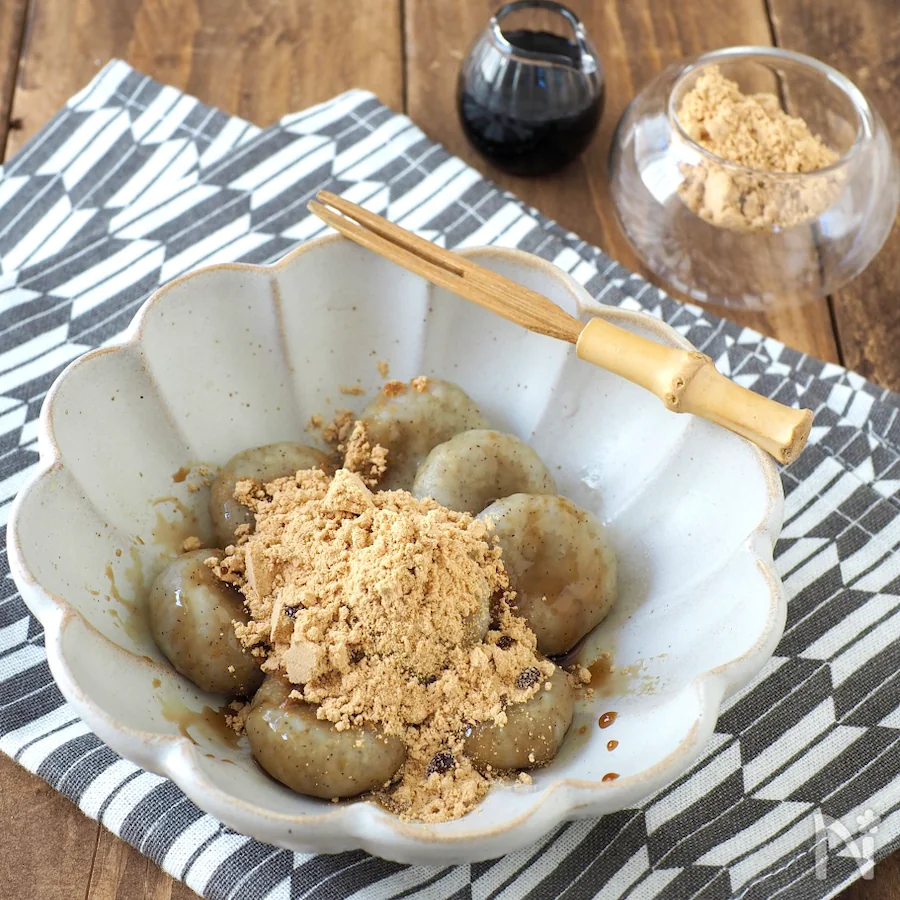
Soba dango simply refers to dango that is made with buckwheat flour (i.e. soba flour). Typically they are less sweet than regular dango, so that people can enjoy the buckwheat flavour.
13. Kibi Dango (吉備団子)
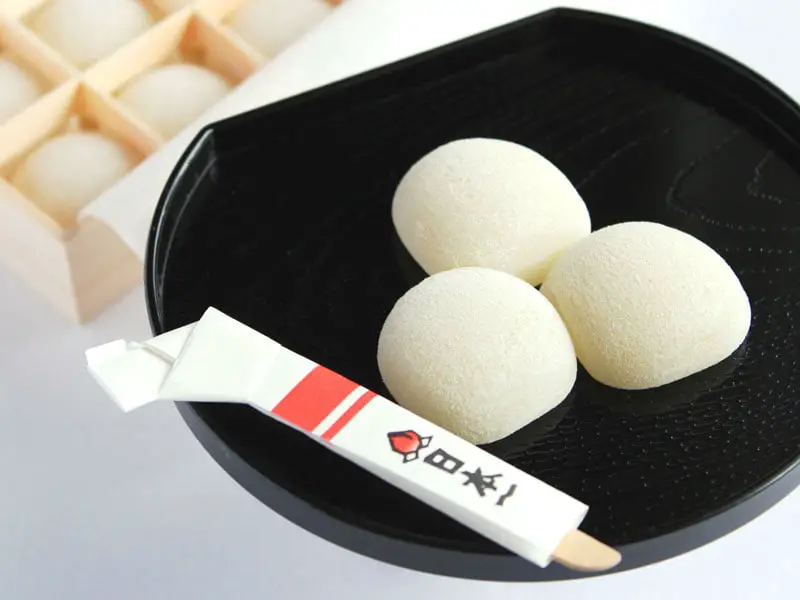
Kibi dango is from Okayama City. Originally, it was made with millet flour. These days, it is made by mixing glutinous rice flour with gyuhi (求肥), a type of soft Japanese candy confectionary. Millet flour is sometimes still added for flavour.
“Kibi” was the name of a state in ancient Japan where present day Okayama is.
14. Cha dango (茶団子) – Tea dango
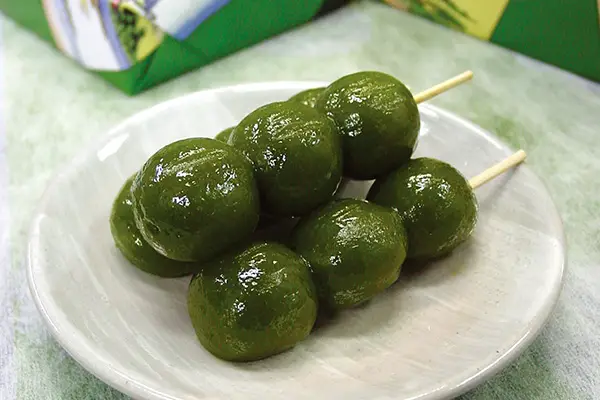
Cha dango is made by mixing the rice flour with matcha powder. The resulting dango has a rich green color, and distinct matcha taste.
It is a specialty of Uji (Kyoto prefecture), which is famous for its green tea.
15. Habutae Dango (羽二重団子) – Silk dango
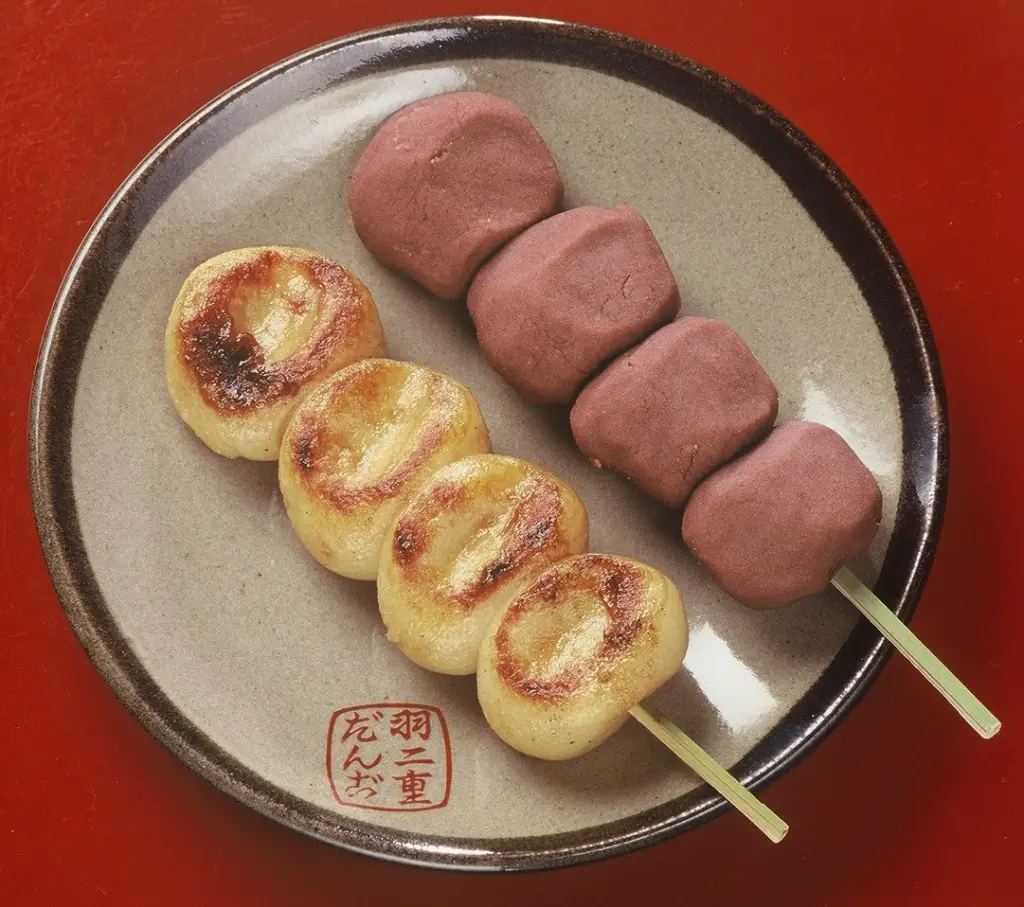
Habutae Dango is a famous brand of dango sold by Habutae Dango Co. The dango is sold in pairs — one anko dango (red bean paste), and one yaki dango (grilled soy sauce). The dango is a bit flattened and disc shaped compared to typical round dango.
“Habutae” is a type of Japanese silk. The original shop was from the Edo period, where its dango was praised for having texture like silk. Thus, the name eventually changed to Habutae dango.
16. Zunda Dango (ずんだ団子)
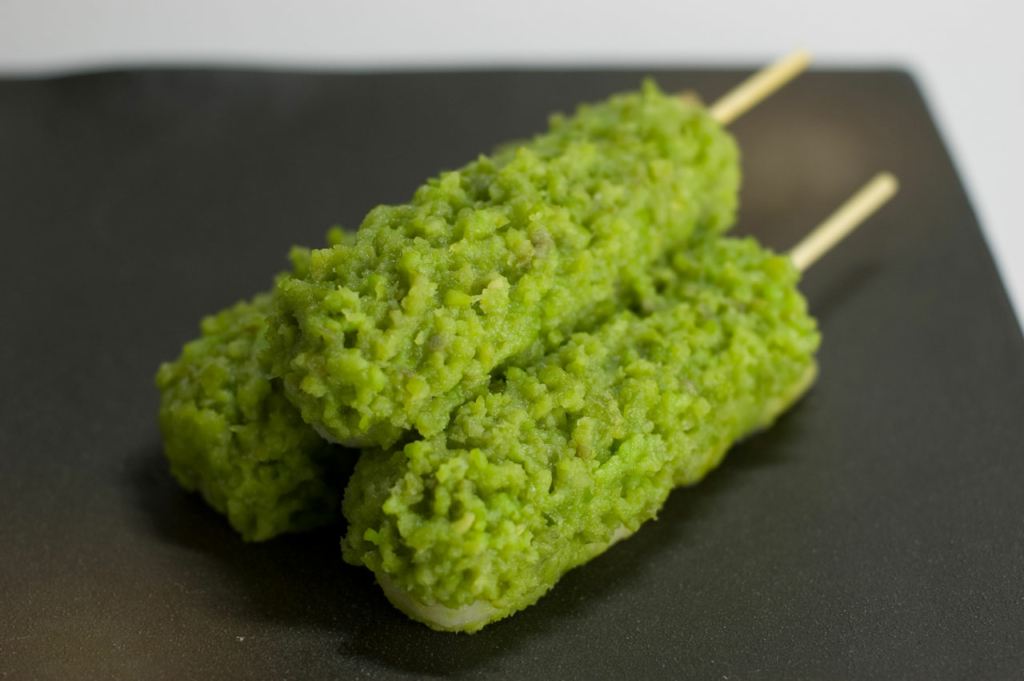
Dango topped with ”zunda” (豆打). Zunda is a unique paste made of mashed, boiled green soybeans (i.e. edamame) that is then seasoned with sugar and salt. Zunda originates form Miyagi prefecture.
Zunda is commonly used in many other Japanese sweets like mochi, taiyaki, daifuku, etc.
17. Kurumi Dango (くるみ団子) – Walnut dango
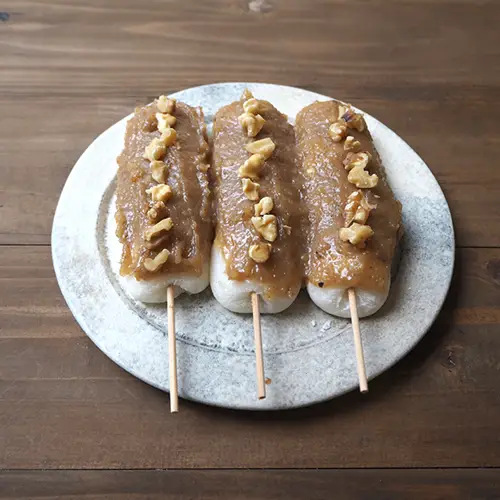
Dango topped with walnut powder or walnut based paste. Sometimes other ingredients are added to the paste like red bean, or miso.
18. Ayame Dango (あやめ団子)
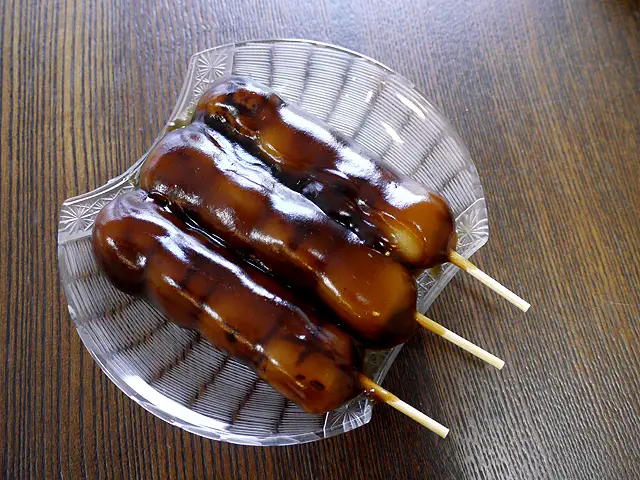
Ayame dango is dango covered with a thick, sticky sauce made of brown sugar. Ayame dango is from Toyama city.
“Ayame” (菖蒲)translates to iris (a type of flower). Not sure why it’s named that, but probably the original shop just felt it was a nice name.
19. Suhama dango (州浜団子)
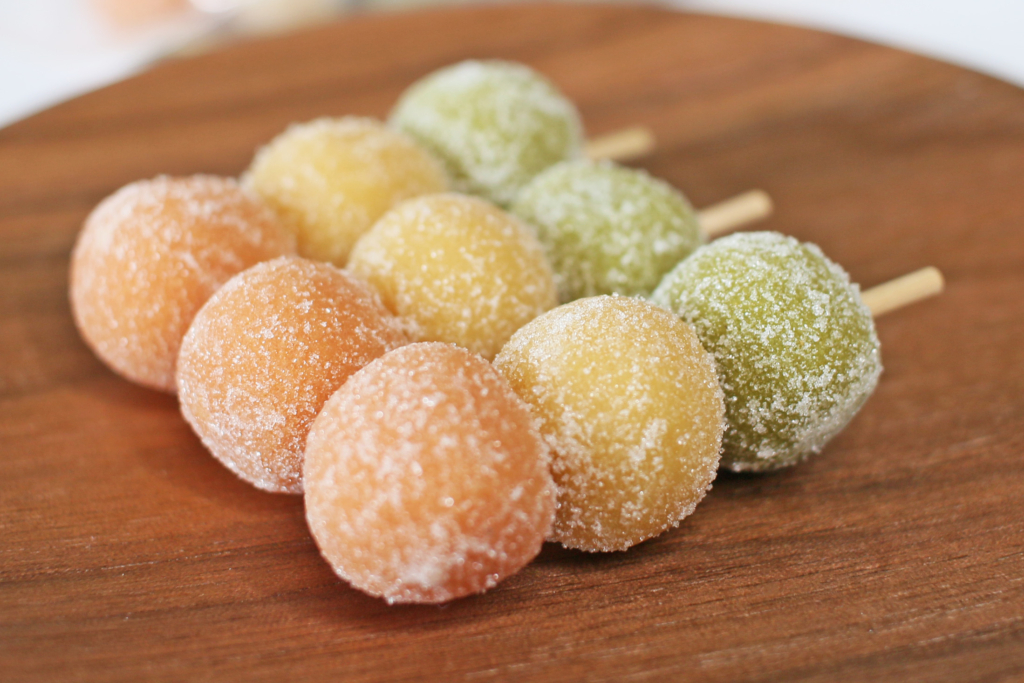
Suhama dango is a famous type from Kyoto. It is a skewer of three different colors — red, yellow, and green. Soybean flour (i.e. kinako) is used to make the dough, which gives it a unique flavour. It is often coated with sugar.
20. Uguisu Dango (鶯団子)
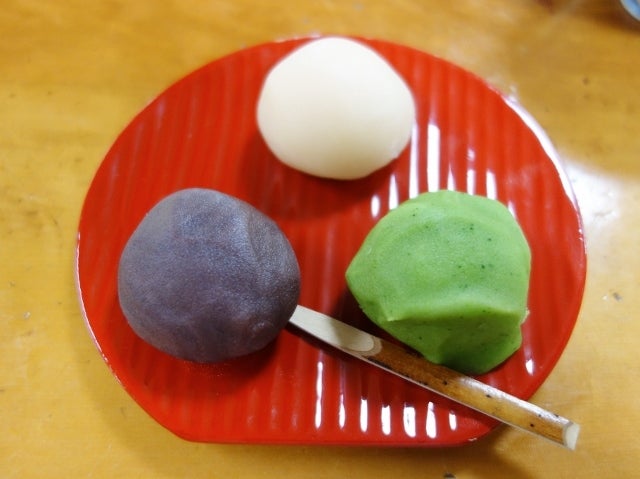
Uguisu Dango is from a small shop in Ueno park (Tokyo) that has been around since 1915. It is a set of three different colored dango (black, green, white) served on a plate. The black dango is made with red bean paste; the white dango is made with white bean paste, and the green dango is made of white bean paste mixed together with matcha. All, of course, are also mixed with rice flour.
“Uguisu” (鶯) is a type of bird (i.e. Japanese warbler) that is commonly seen in the park where the shop is located.
21. Isobe Dango (いそべ団子) / Nori Dango (のり団子) – Seaweed Dango
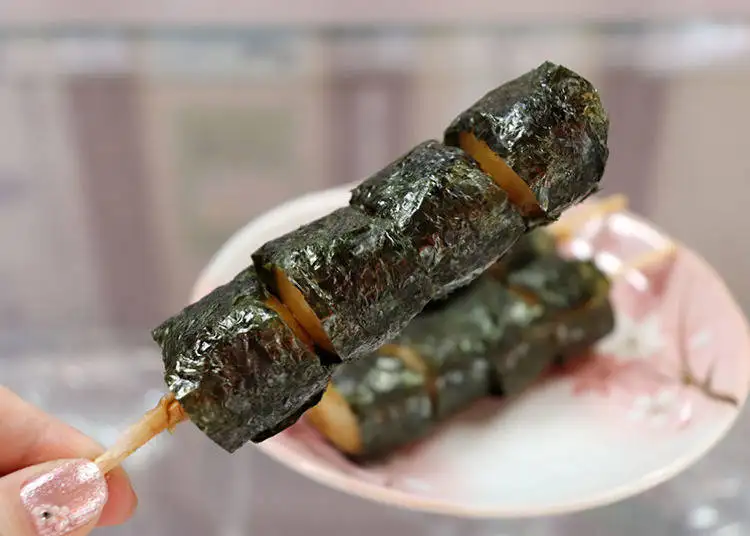
Isobe dango typically refers to soy sauce flavored dango wrapped in dried seaweed (i.e. nori).
“Isobe” (磯辺) translates to “seashore” in Japanese, but is also a general term to refer to any food wrapped in seaweed.
22. Denpun Dango (でんぷん団子)
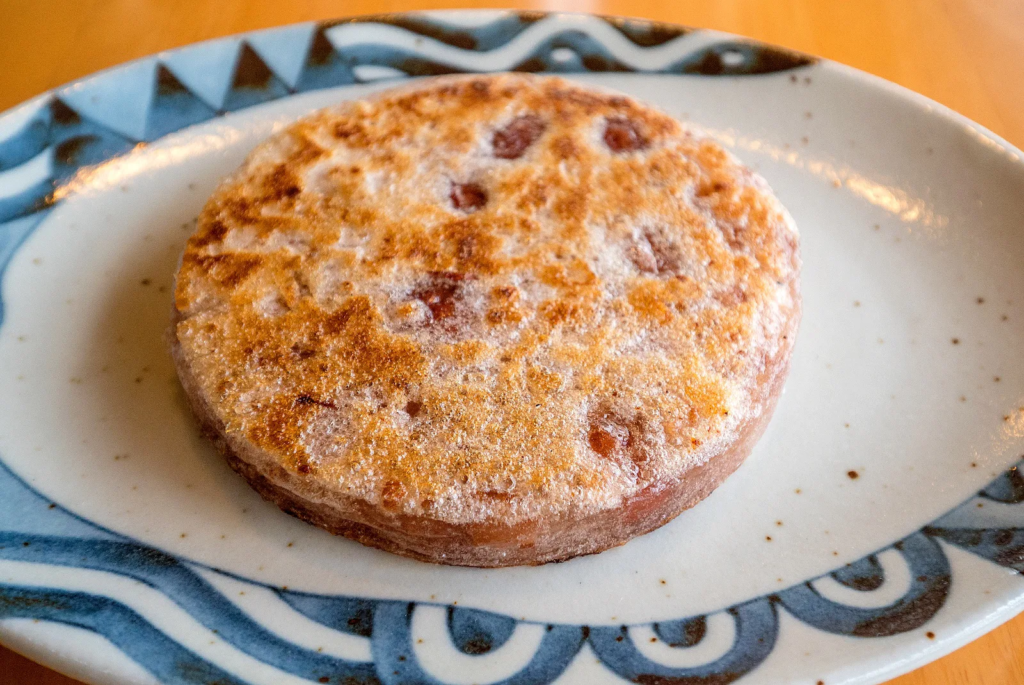
Denpun dango is from Hokkaido prefecture. It is made of a batter of potato starch (i.e. denpun), mixed with boiled, sweetened red kidney beans. The batter is then simply pan fried or grilled on a hot plate (i.e. teppanyaki). It is more like a pancake than your typical ball-shaped dango.
Summary
Those are 22 different types of dango you can find in Japan.
Some types are found all over the country, while some may only be available in specific areas or cities (or even individual shops).
I am sure there are plenty of other types of dango, so I may add to this list more in the future.
Let me know in the comments:
Have you eaten dango before? What types/flavors are you interested in trying?
